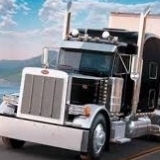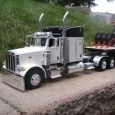-
Content count
311 -
Joined
-
Last visited
-
Days Won
20
About vincen47
-
Rank
Advanced Member
Recent Profile Visitors
7,724 profile views
-
Nice resto-mod style build. Classic, with a few modern updates. Nice work.
-
Looking great. Nice work on that trailer.
-
Looks great. No frills, strictly business. Nice rig!
-
Nice build, great paint finish.
-
Absolutely fantastic. I love the look of this rig. I especially like the worn look of the bottom of the dump bed. Wow.
-
What an interesting project.
-
Nice resto mod with the 6bt and the Alcoas. It would make a good weekend hauler.
-
Thanks, I appreciate it.
-
Here we have the cab and hood started. First, the firewall needed some corrections, most importantly the intake port needs to be the same on both sides. I’m not sure why Italeri goofed that up, but the opening on the vehicle’s right side, left facing the firewall, needs to be lowered and modified to match the other side. While I was at it, I removed the shallow example of a windshield washer reservoir with the intent of rebuilding a more realistic version to attach to the firewall. I eventually decided to make one that mounted to the radiator housing instead, as seen in an earlier post. Then, I cut out and created the pocket for the windshield wiper motor. I added an Ultraroof from Models by Dave, and it has the visor mounting brackets built-in. I broke a couple of them, but made the repairs. They are delicate. A lot of filler to smooth things out. I’ll also need to add rivet detail to replace some of it that was removed during the bodywork process along with some that wasn’t there to begin with. The 379-127 hood is a Bill Drennen casting, purchased from P&P resin years ago. It’s a bit hard to find nowadays, but contact Jamie at Moluminum, he has the molds. I added inner fender detail, along with a good deal of clean-up and filler to get everything as perfect as I can. I’ll also be adding proper rivet detail to the hood shortly, just like the cab. It’ll still need more filler, sanding and a final coat or two (or three) of primer and filler/sanding in between, before rivets are added and a final coat of primer before paint. Preparation can be frustrating, and it is 90% or more of the finishing process, but it’s a necessary evil. I added an improved center hood trim piece from styrene strip/shapes, and that’ll get some rivet detail as well. To better fit those bigger front tires, I added fender flares from re-worked Italeri 378 fender trim with styrene strip/quarter round. The “J” hood hinges are from GW trucks. For the cab floor, I decided to experiment with balsa wood strips and laying the “hardwood flooring” similar to the real thing. Sanded and stained, I like the results, and it’ll just need another coat of floor wax. Probably won’t be able to see the cab floor very well on the completed build, but it’s cool. Certainly easier to lay this type of flooring than in real life! I hope you’re still enjoying the build. More to come…
-
Here is the start of the RV body. It’ll be curbside, as I’m crazy, but not that crazy (at least enough to fully detail out an interior). Maybe on a future build. Anyway, like my previous Aeromax RV conversion build, I started with a 3d printed radius-cornered frame a scale 34’ long, and added .060” styrene sheet for side panels. I penciled in and cut out window openings, in a pattern to match a custom interior layout I have in my head that includes a front bunk area, but not one over the cab. I added additional sheet below the belt line for the utility and storage bays, and corrugated sheet for window shades to give the future tinted windows some “depth” and detail behind them. To get a slightly crowned roof, I placed a styrene panel down the center above the ceiling joists, and again above the sub-roof. The wheel wells were cut out and quarter round added for trim, along with docking light inserts. Lots of sanding, primer, putty, sanding, primer…
-
She’s a beauty. I like the added details like the hood ornament and stacks. Nice.
-
True, what comes with it is a Traxon ZF 12 speed, not available in North America, so I’m going to use the Eaton 10 speed that comes in the A&N W990 chassis kit. If I didn’t have that transmission, I’d use the Eaton 13/18 from Moebius (with or without the autoshift components, depending on the build) or the Eaton from the Italeri Peterbilt Series 60 (looks pretty close to a Eaton RT Series 13 speed).
-
I’d think it would fit, but curious to see for sure. I ordered one myself, I plan to use it in the A&N W990 kit. It’s a good choice for your T800. Looking forward to seeing it.
-
Good color choices, it’ll be a nice build.
-
That’s a beautiful truck. Makes a great resto-mod. Maybe gets some work, but nothing too hard in its semi-retired life, and always gets cared for, washed and polished. Maybe it’s the boss’ truck, something you’d see at a truck show. Nice work.




.thumb.jpg.1134de5f0416b74d25519d3d400538d3.jpg)
